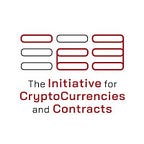Anchored NFTs
by Ari Juels
Museums exist not just to house original works of art, but as shrines to be visited by art lovers. Physical works of art — oil paintings, for instance — look very different in person than in posters or digital images. I’ve spent twenty minutes staring at this Vermeer in person. I can assure you that the sacred hush magically rendered by the artist in the original painting is all but obliterated in reproduction.
There’s another facet to appreciation of art, though, one that’s not just about brushstrokes or esthetic nuance. Why, after all, do people flock to see the Mona Lisa when they can barely make it out through the ten-foot thick protective barrier of tourists?
The answer is that there’s something about the mere encounter with a cultural icon that’s psychologically appealing and gratifying. Psychologists sometimes refer to this phenomenon as “contagion” — a form of magical thinking. Just being in the presence of a culturally or personally iconic artwork or person can produce the powerful feeling that we’ve somehow received a metaphysical dose of the object of our awe.
As purely digital works, NFTs offer no notion of physical encounter. Some form of contagion might accrue to the owners of historically important NFTs — e.g., the owner of an NFT of documentation of a Nobel-prize winning scientific discovery might feel that she owns a piece of history. Merely looking at an NFT, though, can’t produce the same tingle in the spine as beholding a beautiful or famous physical object.
Or can it?
Key-Anchored NFTs: Psychology Meets Cryptography
NFTs aren’t just digital media, they’re digital media controlled by cryptographic keys. An NFT is associated with one (or more) private keys that correspond to ownership and control of the NFT. If the private key exists in just one physical location, then the NFT in a sense does too.
That’s the premise of an experiment we’re conducting at our NFT gallery opening at Cornell Tech on 3 Oct. Eirik Ulversøy, a.k.a. “Kitten Mittens,” and Dapper Labs will be generously lending us some historically important CryptoKitties, including, for instance, Vulcat — a unique, i.e., 1-of-1, CryptoKitty created specially as the 1,000,000th generated in the CryptoKitties game. They will be lending us these NFTs by sending them temporarily to a smart contract that we call an anchor contract. This contract is controlled by a private key uniquely present in a single wallet that we call an anchor key.
At our NFT gallery opening, the wallet containing the anchor key will sit on a panel configured to display NFTs held in the anchor contract. Seeing an NFT on the display will mean that you are physically near its unique anchor key. In this sense, when you see Vulcat on the display, you are standing in the physical presence of Vulcat!
Here is my decidedly un-Vermeer-like hand-drawn schematic of the setup.
Our goal at the gallery opening is for these anchored NFTs, as we call them, to reproduce something of the experience of seeing an original work of art or collectable — both the delight and exclusivity. We hope our experiment will be an important first step in our journey to bring to NFTs a touch of the magical thinking that is such an important part of the human experience.
Thanks to James Austgen, Kushal Babel, and Phil Daian for all of the technical legwork on this project. Thanks to Eirik Ulversøy, a.k.a. “Kitten Mittens,” and to Dapper Labs for their generous loan of historically important and rare CryptoKitties for our event and experiment.
Stay ahead of the curve with the latest IC3 research! Subscribe now to our mailing list!
